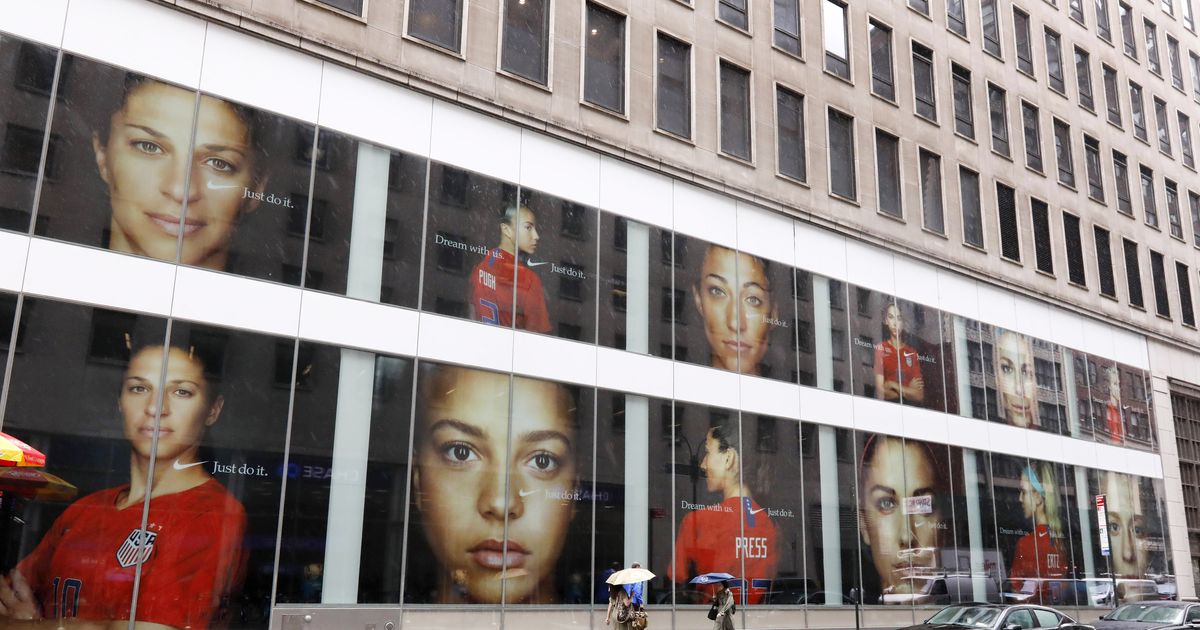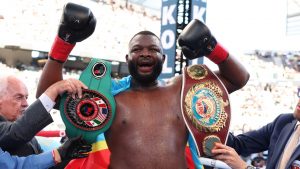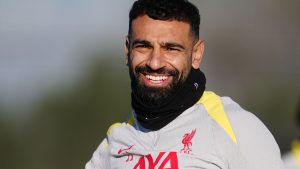Women’s league seeks more fans, sponsors after US title


Megan Rapinoe, the lavender-haired icon of women’s soccer, maintains that green is the key to her sport’s sustainability.
“For me, it’s about the Benjis,” she said.
Women’s soccer engages the U.S. every four years, then disappears for most fans like a comet leaving the solar system. In the wake of the Americans’ record-setting fourth World Cup title Sunday, the hard part remains: the weekly work of boosting the National Women’s Soccer League, where average attendance remains at a minor league level.
Fans have not handed over a sufficient supply of $100 bills displaying Benjamin Franklin’s portrait, and sponsors and broadcasters have not made enough of the six-, seven- and eight-figure agreements needed for the NWSL to rise to the level of men’s Major League Soccer.
“On the men’s side in MLS, they have owners with extremely deep pockets,” defender Crystal Dunn said. “If the women’s game is going to grow, it’s going to come down to us not kind of penny-pinching on things and really putting a lot of resources in.”
The Women’s United Soccer Association, launched as the first fully professional women’s league, folded in 2003 after just three seasons. Women’s Professional Soccer started play in 2009 and also lasted only three seasons.
NWSL took the field in 2013 and has a management contrast with the U.S. Soccer Federation, which has listed nearly $8.5 million as expenses attributable to the league. The USSF pays the salaries of 22 allocated national team players, providing the NWSL a subsidy and the ability to market the top American players.
NWSL launched in 2013 with eight teams, increased to nine the following season and 10 in 2016, then went back to nine in 2018 — of which four share owners with MLS.
“When the league started, no one expected the league to survive seven seasons,” Utah Royals coach Laura Harvey said. “I think the biggest battle has already been overcome a little bit in the U.S. that a lot of women’s soccer faces across the world, is that people are willing to pay a ticket price to watch a game.”
MLS, which started with 10 teams in 1996, expanded, contracted and now has grown to 24 teams this season, with plans to expand to 30. MLS average attendance has risen from the 14,000 range at the turn of the century to about 22,000; the NWSL is between 5,000 to 6,000.
“The MLS, it’s well documented, had its share of growing pains when it was still a toddler and a youth, if you will. So. I don’t think any of us involved in the NWSL thought this was going to be an easy journey in establishing a viable women’s league,” said Mike Golub, president of business for MLS’s Portland Timbers and the NWSL’s Thorns, who lead the league with an 18,000-plus attendance average.
Just a handful of NWSL games were televised nationally from 2013-16 but the league announced a deal with A E Networks ahead of the 2017 season in which the company would take an equity stake and broadcast a game of the week on Lifetime. But A E cut short the deal last winter, a season early, and it took NWSL until last week to announce an agreement for ESPN to televise 14 games during the season’s second half.
NWSL’s staff is small. The league had three to five full-time employees when it started and now has 13, including five in its media office. The goal is to grow teams and staff.
“Not expansion just to expand,” said Amanda Duffy, who is in her third season running the NWSL office and in her first year as league president. “It’s expansion to get right with the right ownership, with the right facilities, the right market, the right infrastructure and the right ability to connect with the community and resonating in a market. And if we get that right, that will also at the same time broaden our footprint, broaden the relevancy.”
NWSL announced a sponsorship agreement Sunday with Anheuser Busch Cos. Inc.’s Budweiser, a deal negotiated by MLS’s marketing wing Soccer United Marketing.
“We identified the fact that there is a national and global attention one month out of every 48 months, and if we really, truly want to act like supporters, if we really, truly want to grow the sport, it’s got to be day in, day out, I mean during the actual season,” said Monica Rustgi, Budweiser’s vice president of marketing. “It’s also to use our scale and reach to get more people into the fold and more sponsors into the fold.”
Budweiser joined a relatively small group of NWSL national sponsors that includes Nike, Lifetime, Spectrum Brands Holdings Inc.’s Cutter insect repellant and Thorne Research Inc., which manufactures nutritional supplements.
“I think for national sponsorships, that’s a process that takes time,” Duffy said. “I think right now the larger and broader opportunities from a sponsorship perspective are going to be more at a local level, where there’s an immediate connection with the NWSL players and the brand at a local scale in those markets.”
Houston, Orlando, Portland and Utah have shared owners with the MLS teams in their cities, and defending champion North Carolina has the same owner as the local team in the second-tier United Soccer League Championship. A joint ownership model has been a success in Europe. Lyon has won four straight European Women’s Champions League titles, and Barcelona, Bayern Munich and Chelsea reached the semifinals.
“Europe is doing a very good job in general,” said Ricardo Fort, vice president of global sponsorships at The Coca-Cola Co. “A lot of leagues have established in the last couple of years. There is investment from the clubs and sponsors are following the best.”
Boosted by players developed by the clubs, seven European nations reached the Women’s World Cup quarterfinals. The economies of scale help keep down costs.
“In our case there’s some real inherent advantages having one organization run both clubs,” Golub said. “We have a staff of 160 people, all of whom are charged with running both the Timbers and the Thorns. … Teams that don’t have more than one club don’t necessarily have that scale, those resources that expertise. We also have by virtue of our men a great facility that we can control, a great practice facility.”
The league’s listed minimum salary charge to a team’s salary cap budget this year is $16,538 and the maximum is $46,200, though many players earn far more. Midfielder Rose Lavelle, who scored the second goal in the World Cup final, said that while national team players have higher pay, some of her club teammates need to coach on the side to make ends meet.
“We need kind of sustainable income so that people can feel like this is their full-time job. I think right now, the reality of just women’s sports in general is that they can’t devote their whole life to what they love,” she said. “I just feel like the next step is that we need to make everyone feel like they are a professional athlete.”









